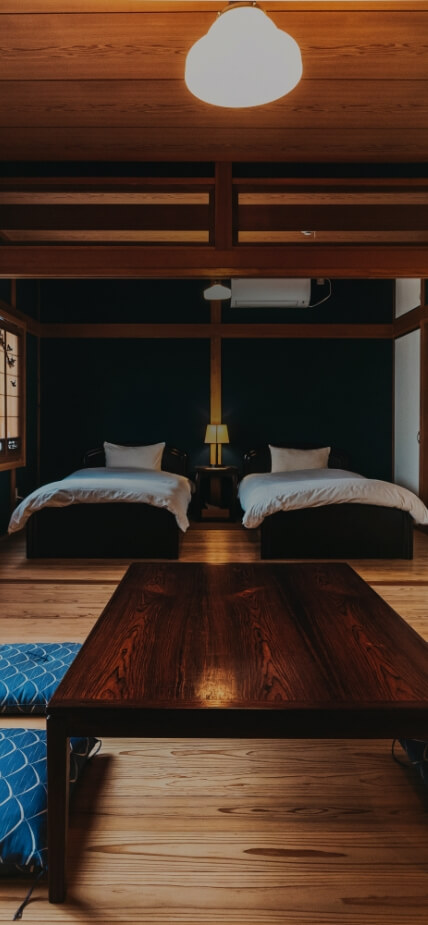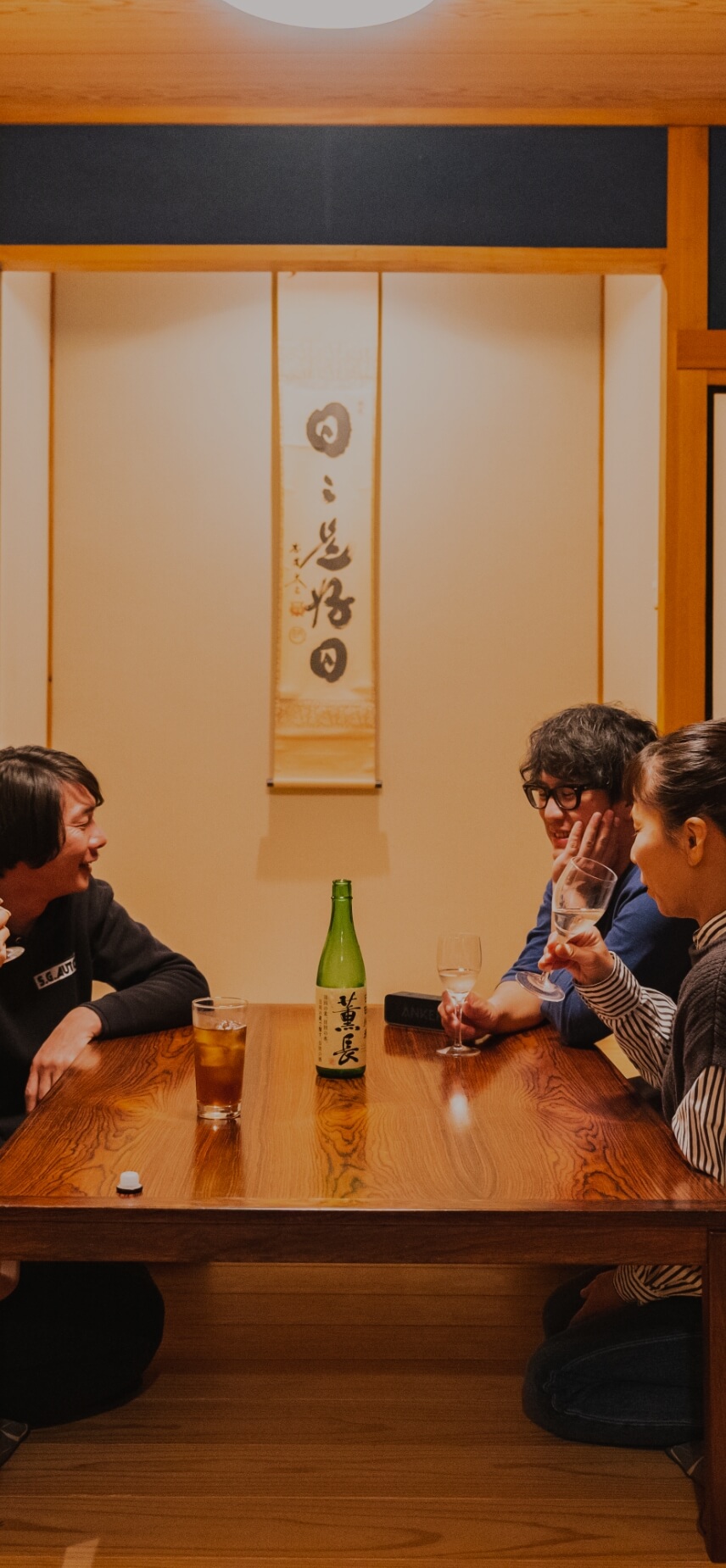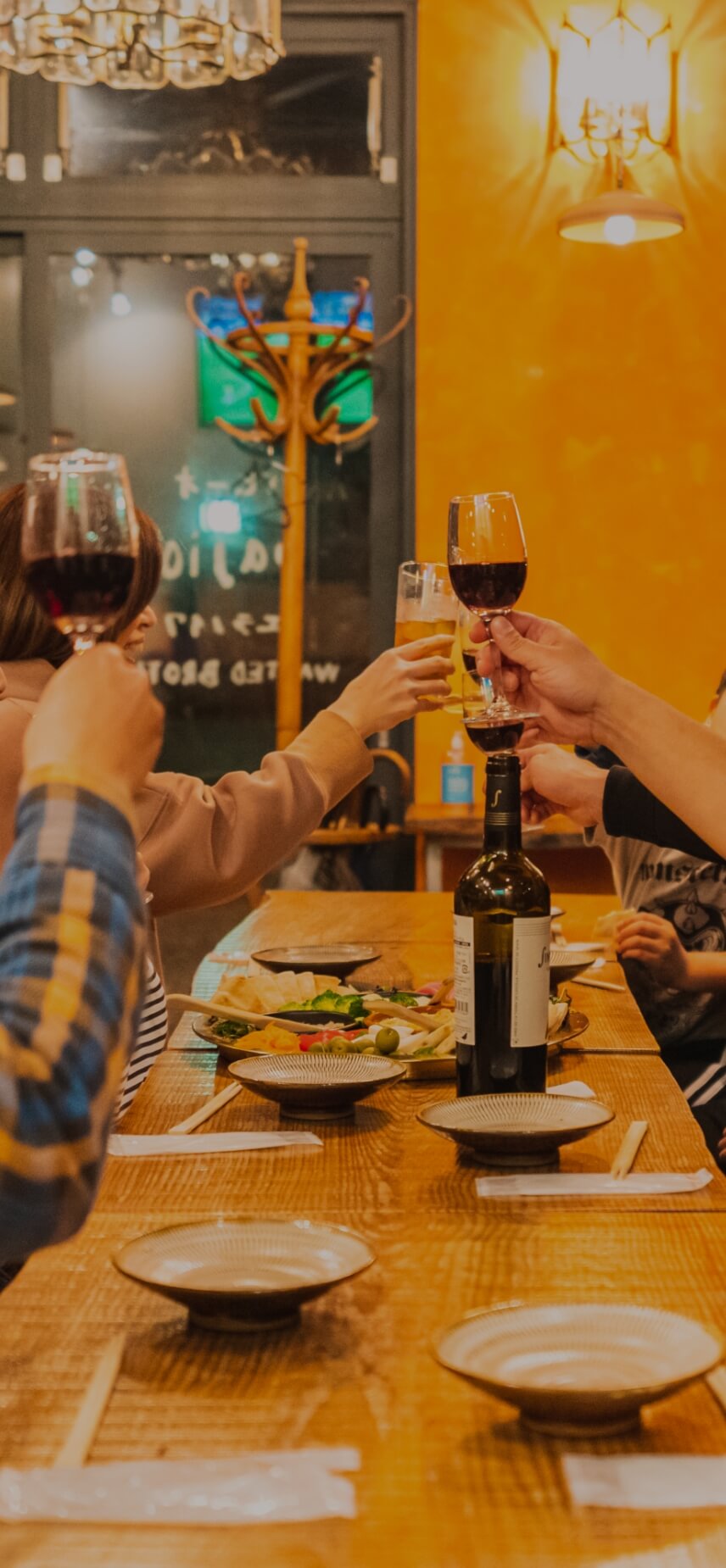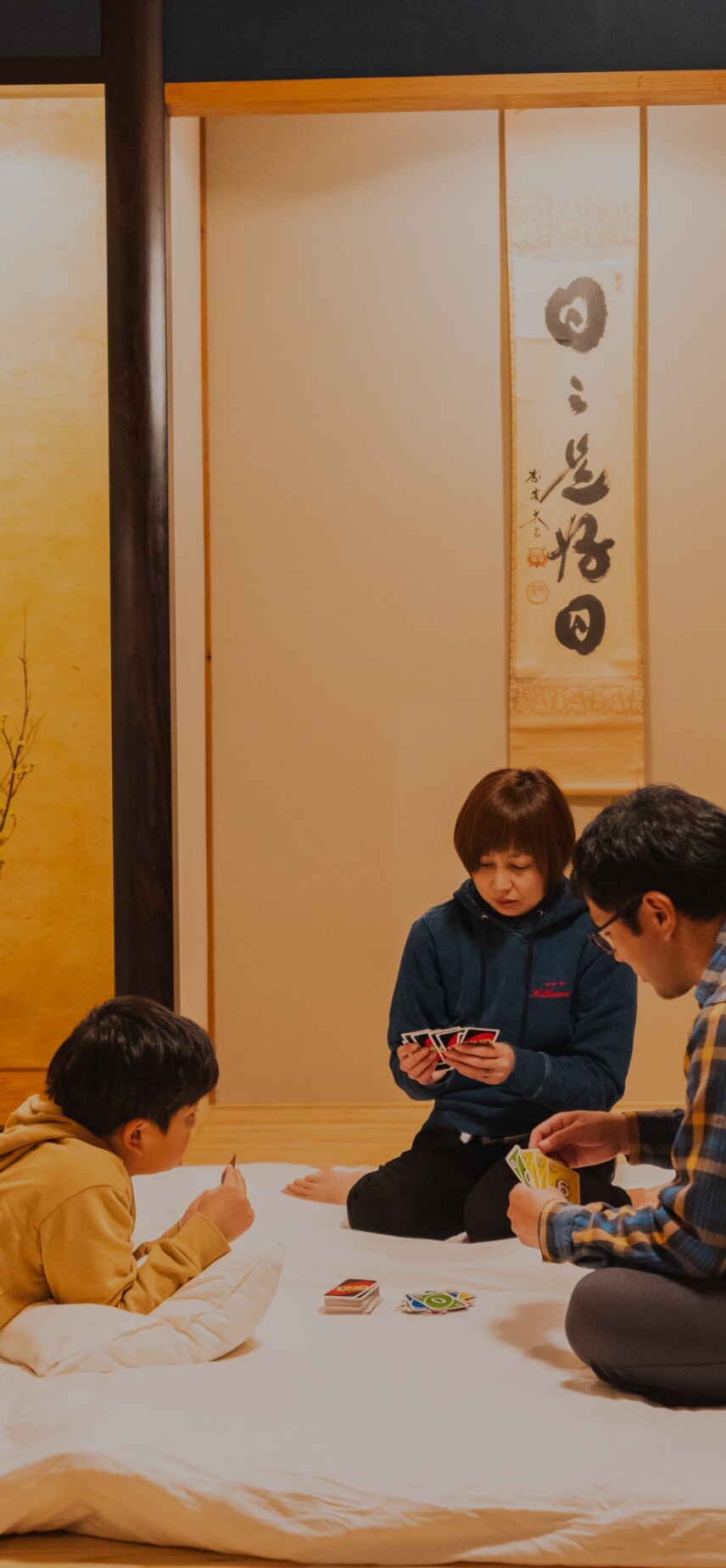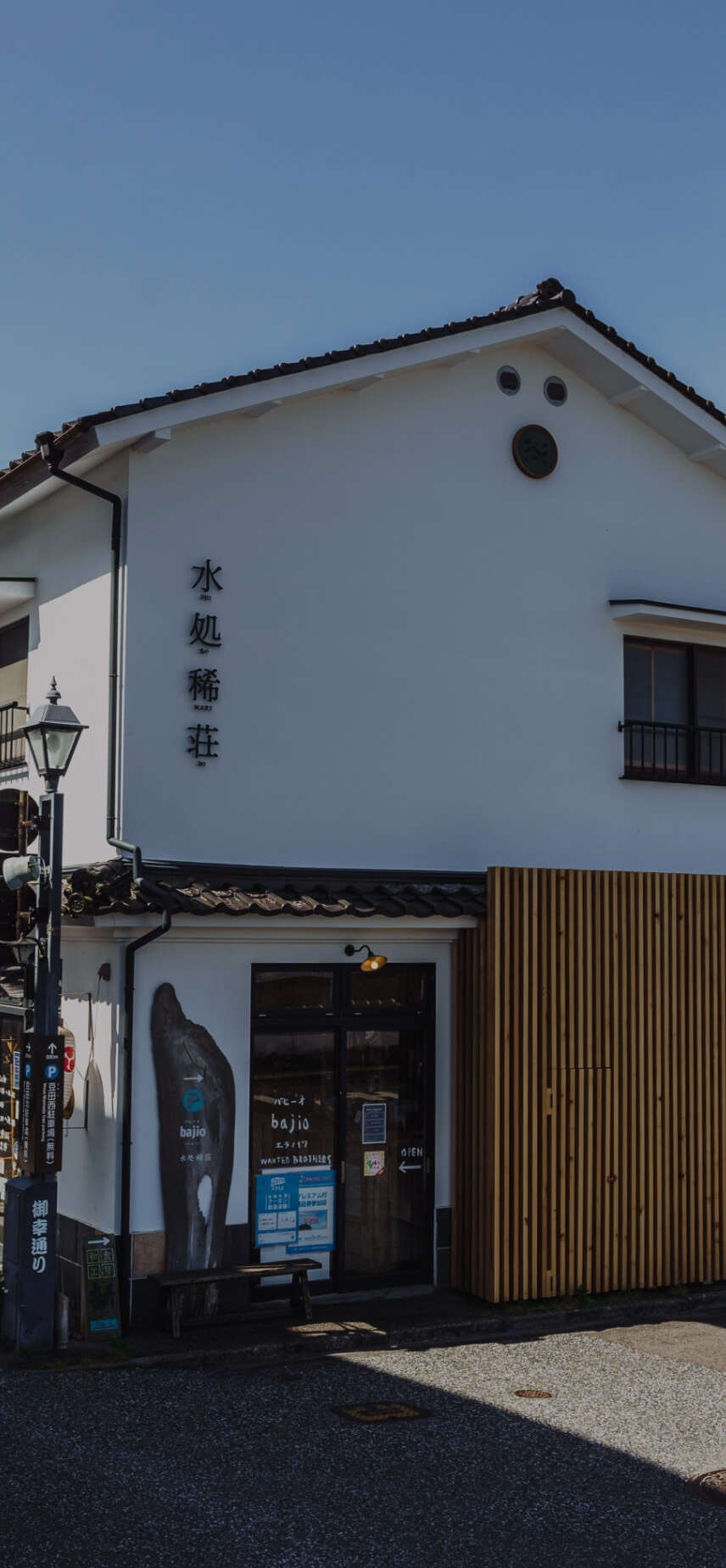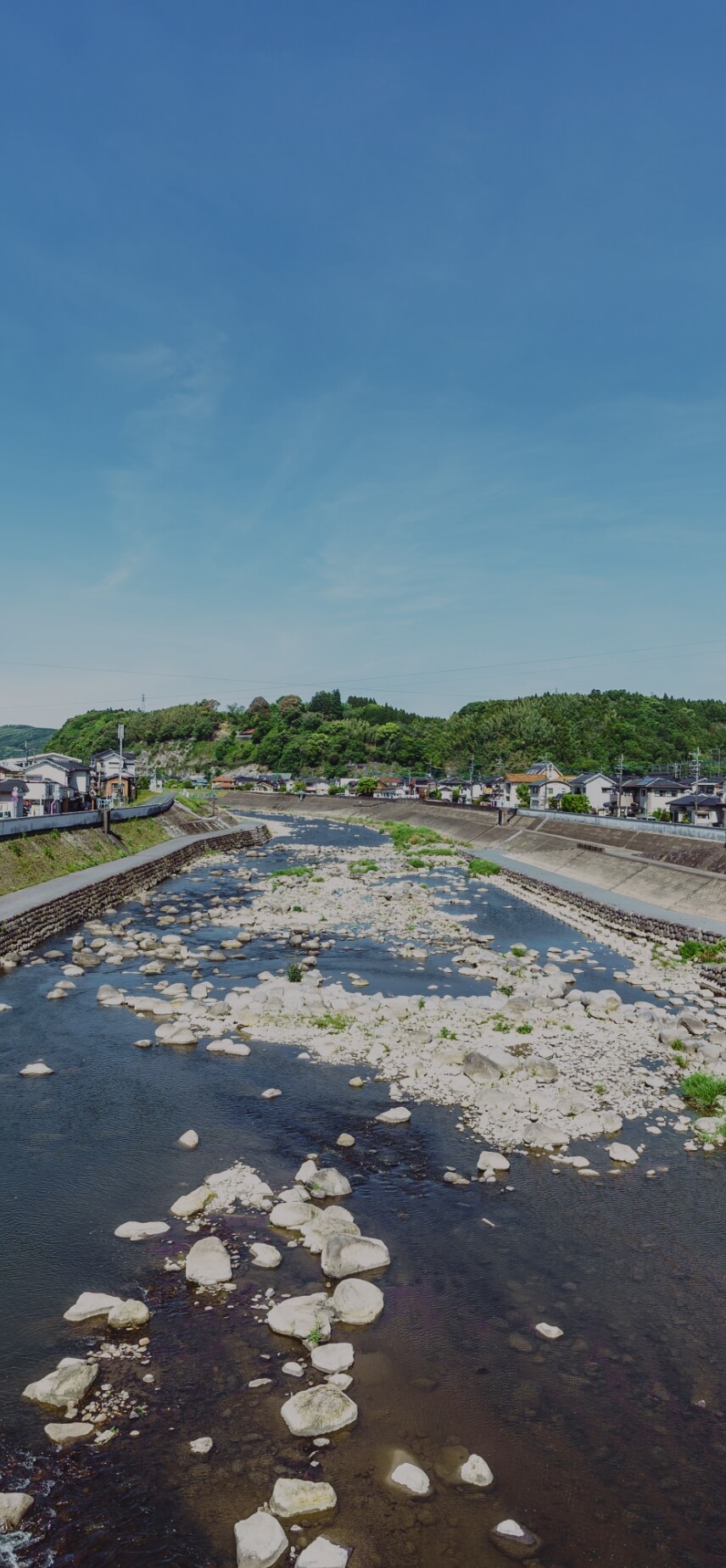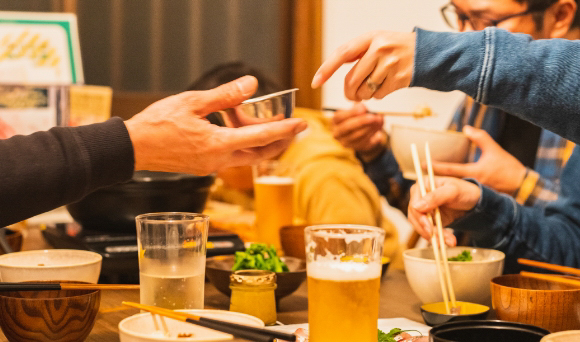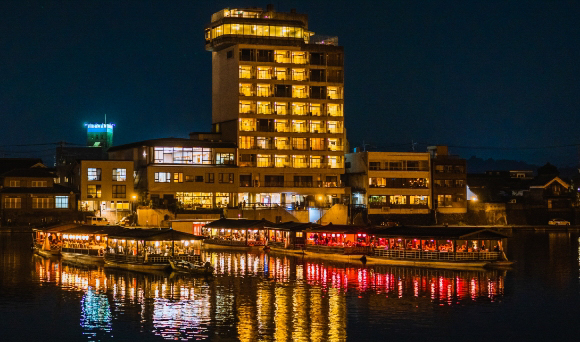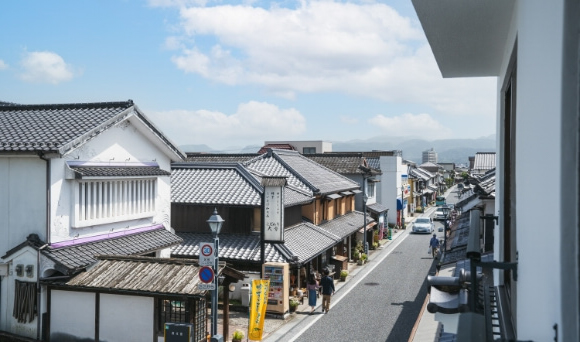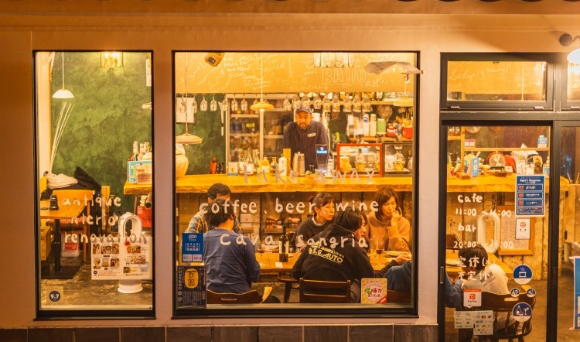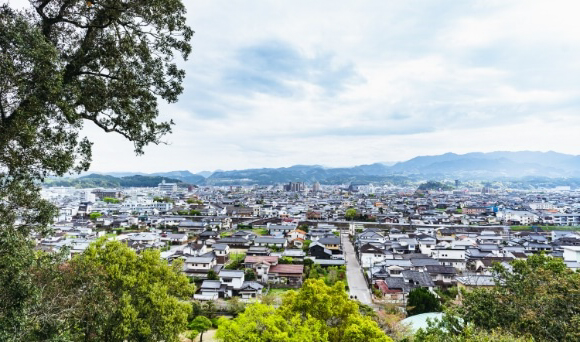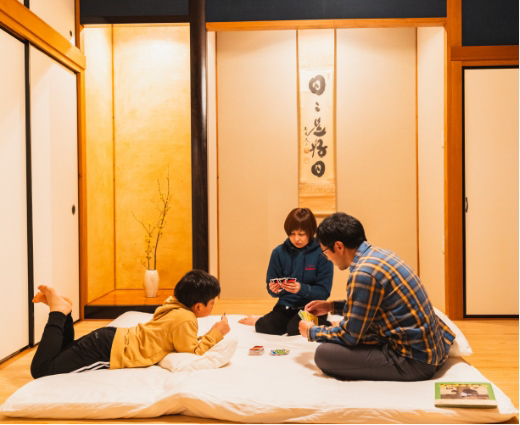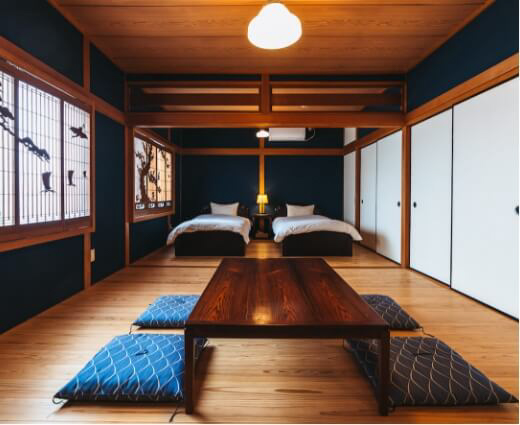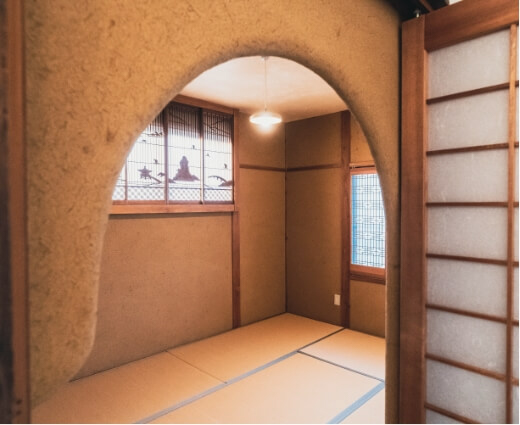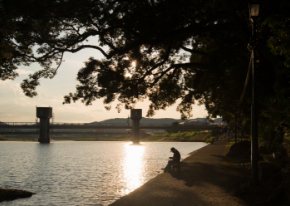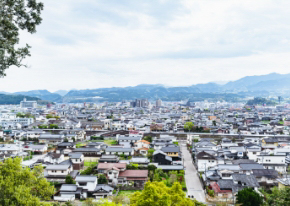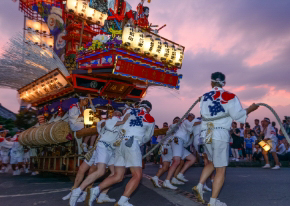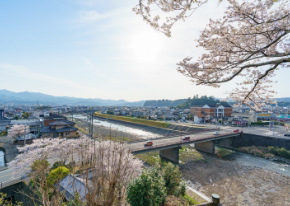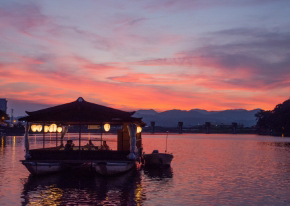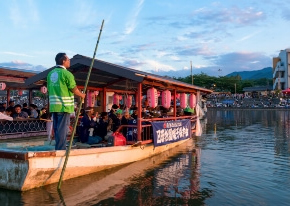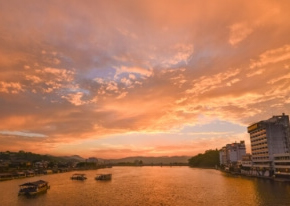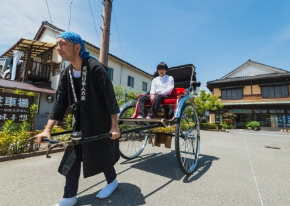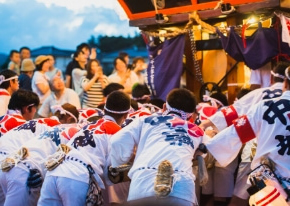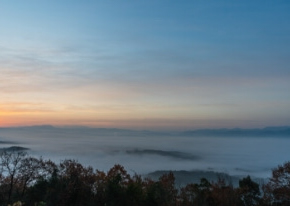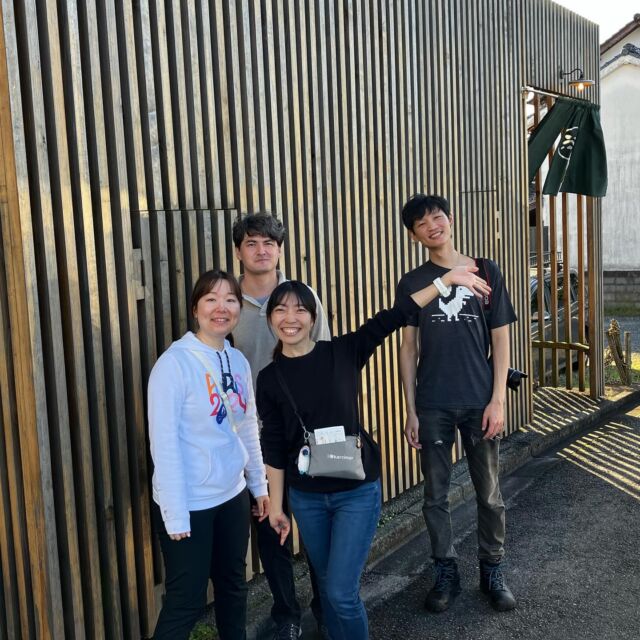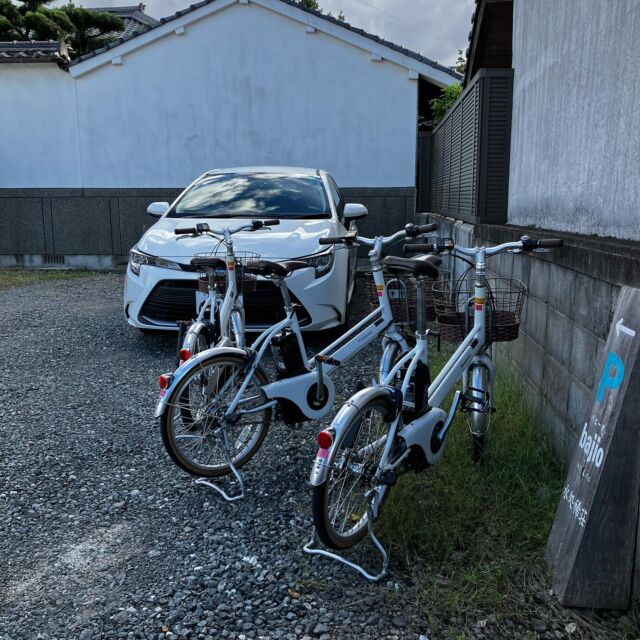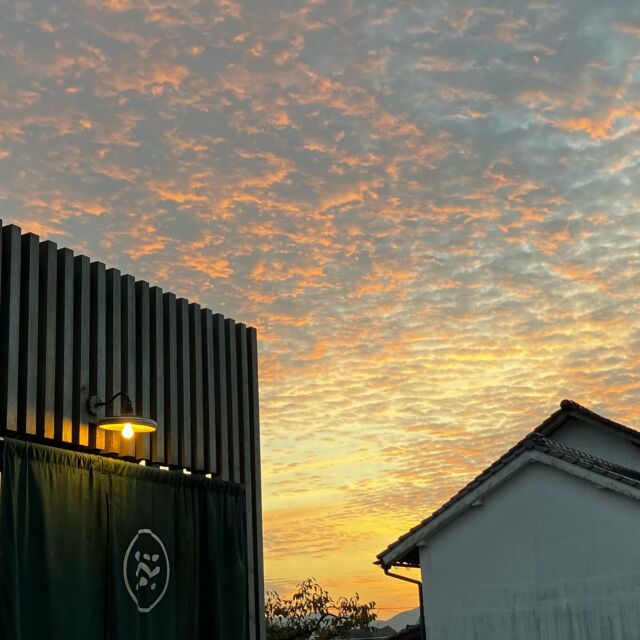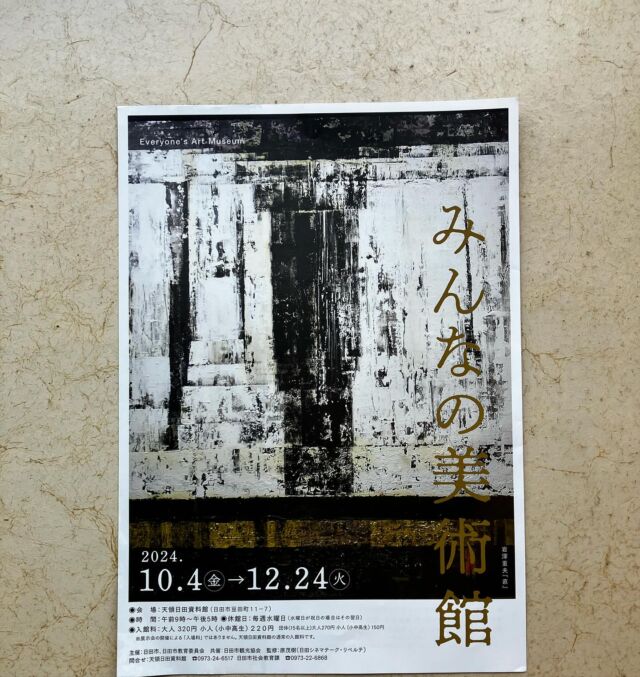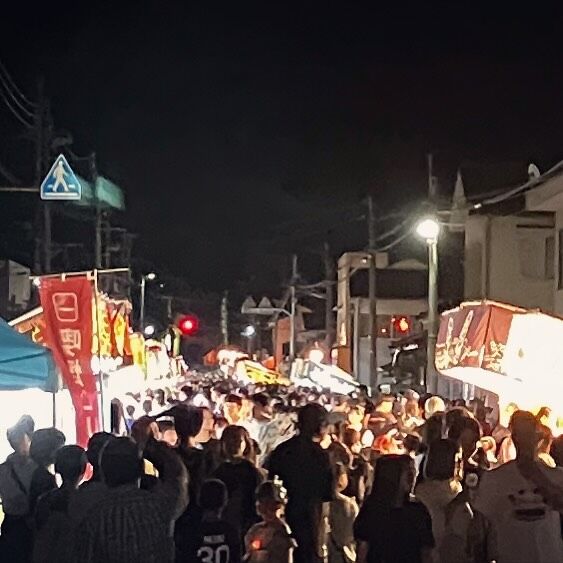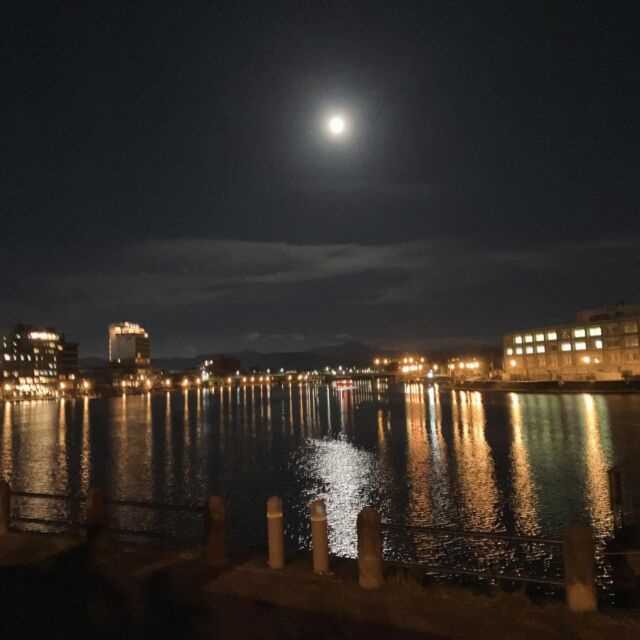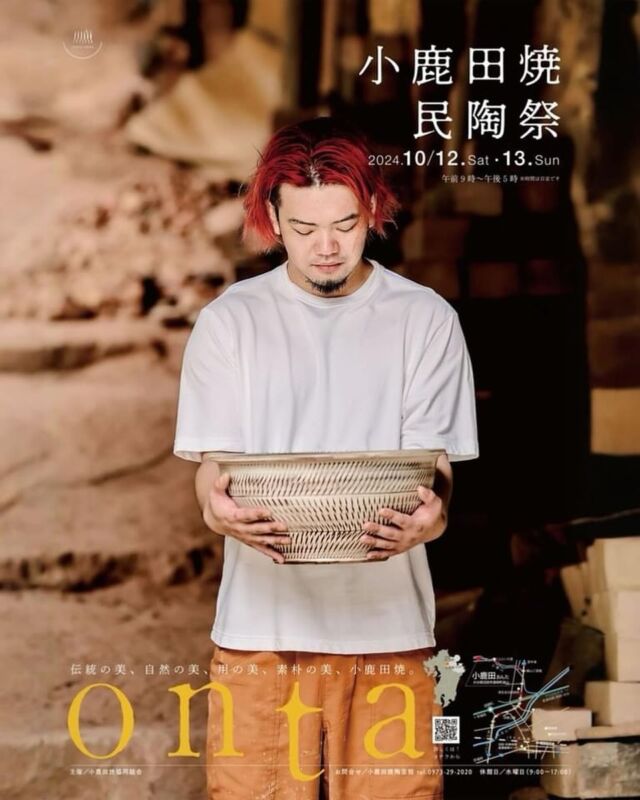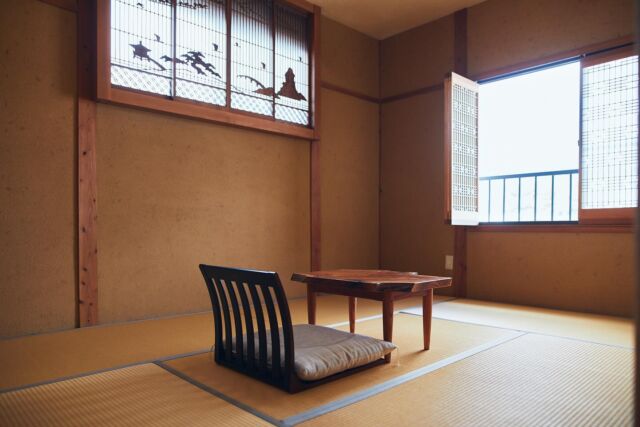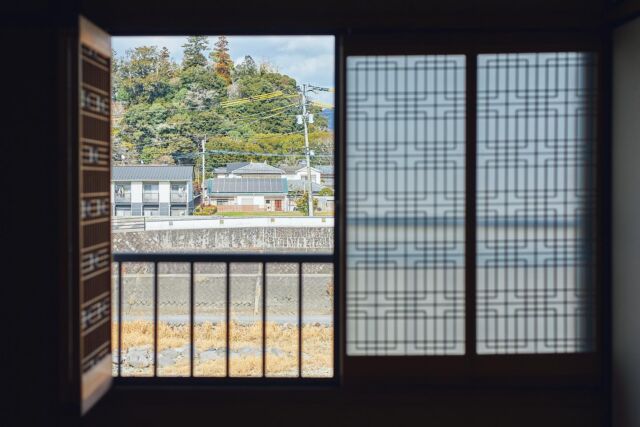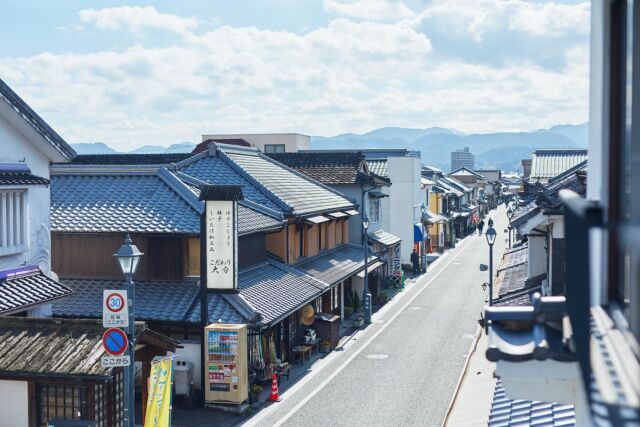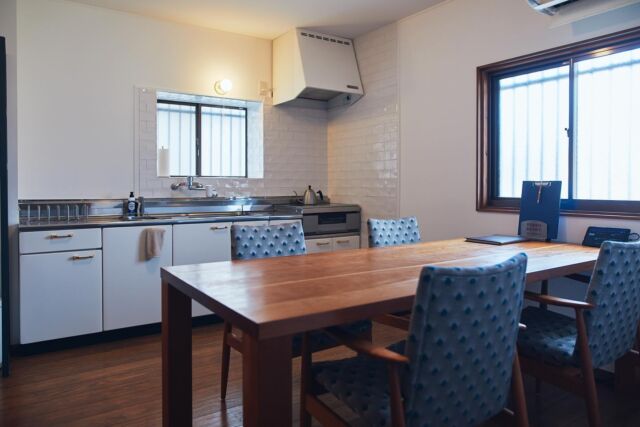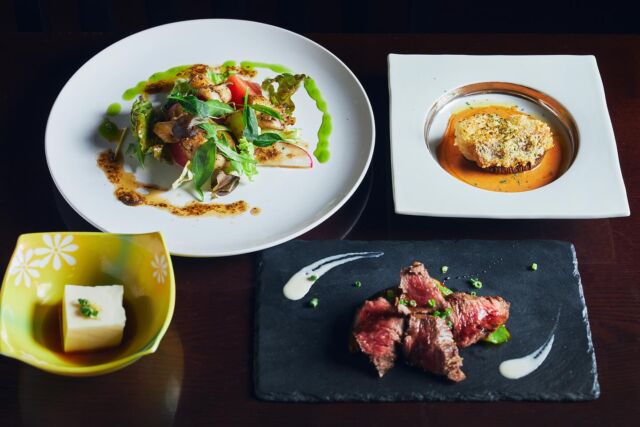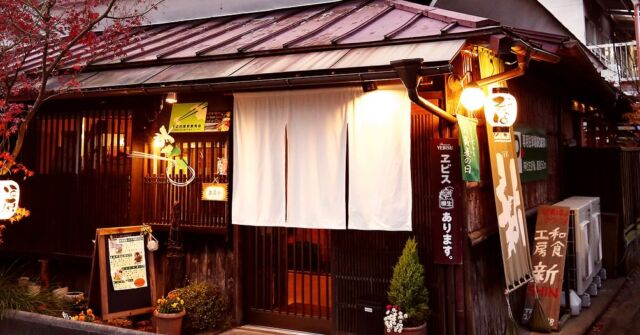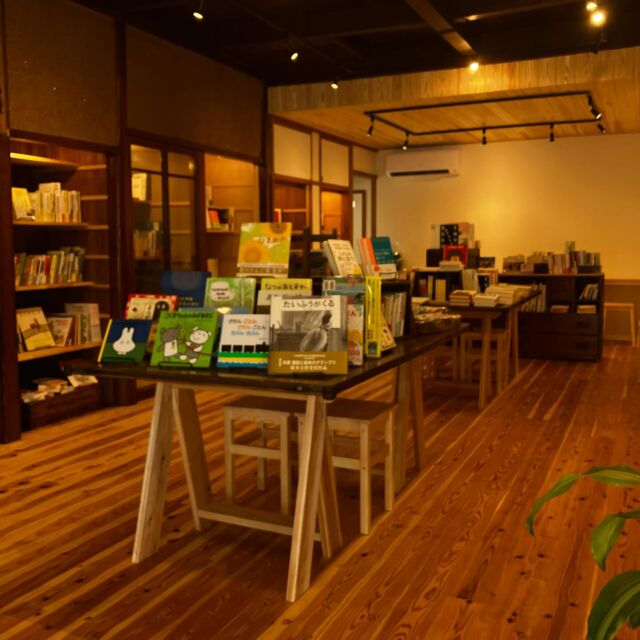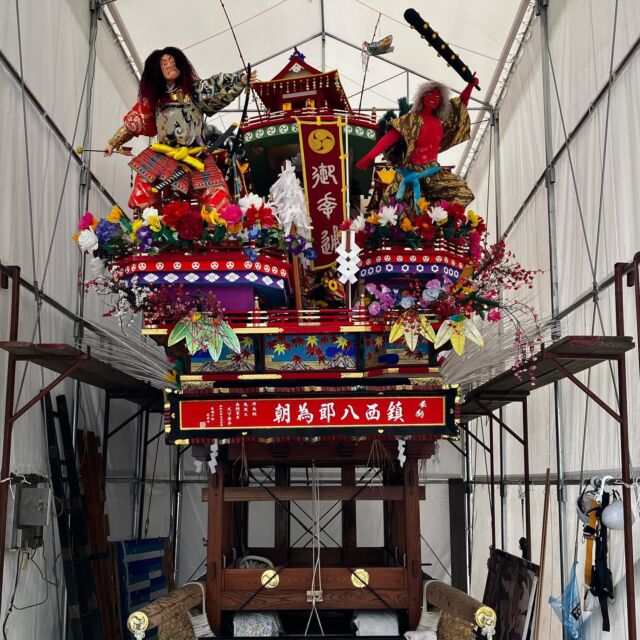

 The feelings inside Suikomareso
The feelings inside Suikomareso
The historic cityscape of Hita, The house by the river, Reserved for one group at a time
Originally, this place was the entrance to the Yasaka Shrine, and there was a large kimono shop, which was a key point in the town. In the Edo period, Mamedamachi, a place controlled by the shogun, was the closest town to the Nagayama Castle, which was a daikanjo, on the other side of the river.
Hita is a place where many waterways and land routes intersect and has been functioning as a Kyushu hub city for a long time. Since ancient times, during the Edo period, Mamedamachi was a shogun territory, and has prospered through time, then having Suikomareso here is good for the community development.
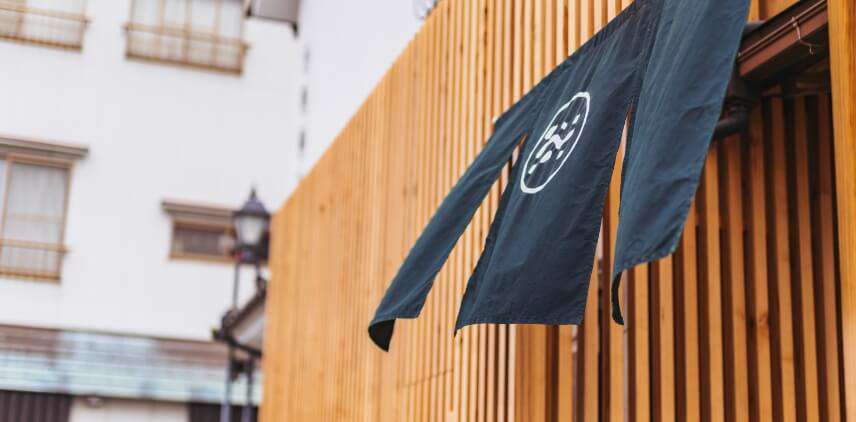
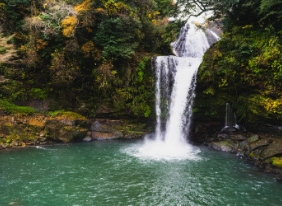

There, in 2015, I opened the cafe & bar bajio, and from there, I had the idea of making the 2nd floor the guest house.
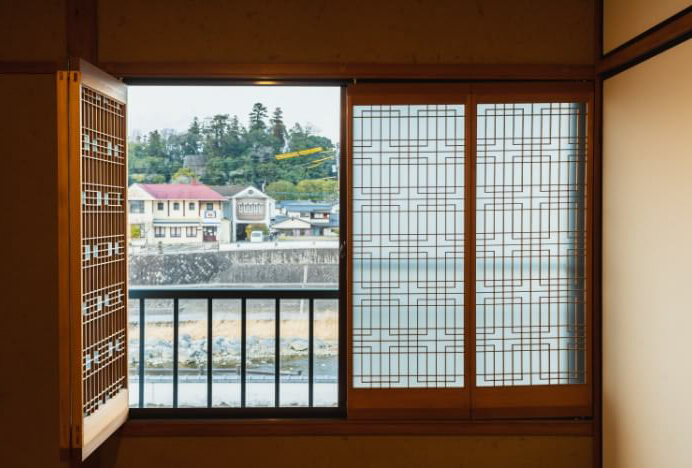
There is the Kagetsu River in front of you, you can hear the sound of water constantly, and you can see the morning sun and the setting sun slowly from the Miyuki Bridge and the promenade along the river. There are some nights when the night fog comes out, and the streets dimly lit by the orange lights of this town are unrealistic and emotional enough to make you feel like you have slipped back in time.
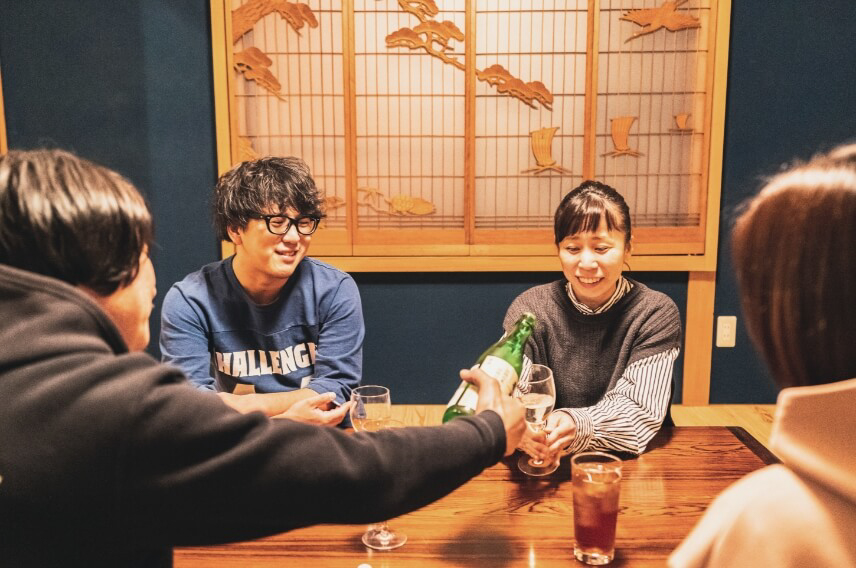
If there were to be a house you can use as a base, then travelers and distant guests would be able to experience Hita throughout the day.
You can also interact with the locals at the shop on the first floor. I decided to build an inn on the 2nd floor, hoping that this would be a base for people to travel around Kyushu and a place where people and information would come and go.
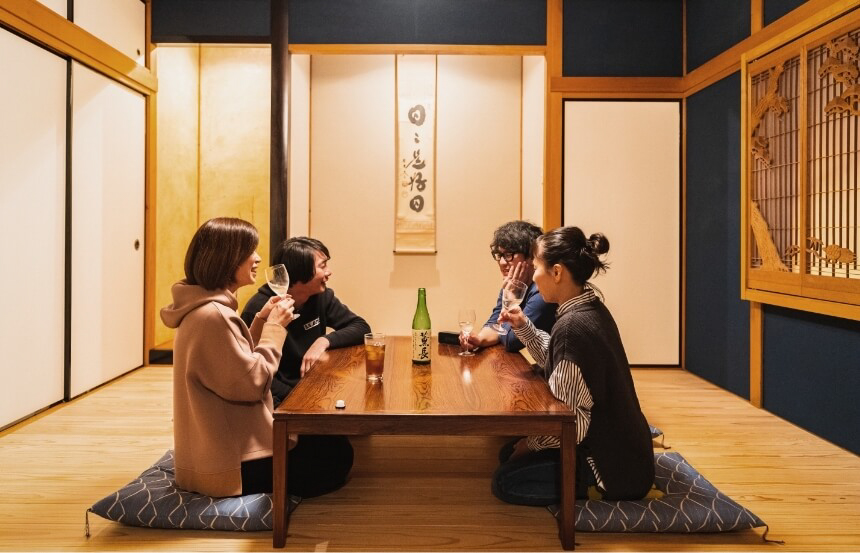
And that’s how Suikomareso was born. By being surrounded by the skills, pride, and passion of Hita artisans.
 Stay while learning about the daily activities of this city
Stay while learning about the daily activities of this city
 The skills and determination of the craftsmen gathered in the water and the earth rooms
The skills and determination of the craftsmen gathered in the water and the earth rooms
A blue wall gradually dyed by an artisan painter
The construction method used in this piece was to dye the wall bit by bit. By manually applying thin coats of paint, the texture becomes uneven or faded, making it look different depending on how the light hits and the time of day. This special color is called Suikomareso Blue, which is a symbolic color of Suikomareso.
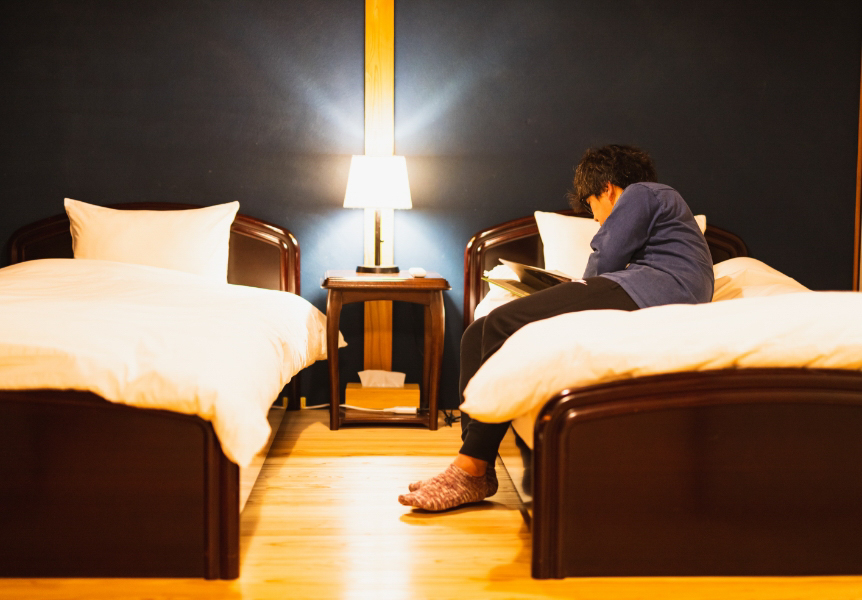
-
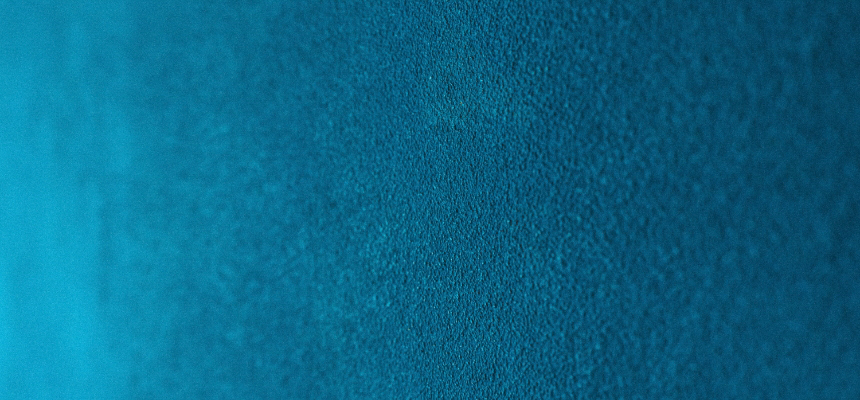
This special color is called Suikomareso Blue, it is the symbolic color of Suikomareso. It was applied by hand in several thin layers.
-
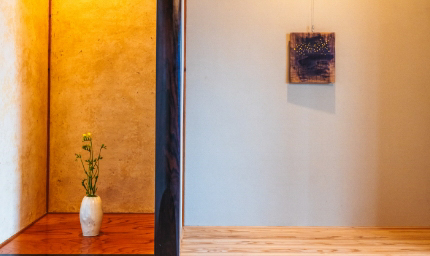
Tokonoma with paintings, writings, sample boards, etc. This work is hand finished by artisans using natural materials.
-
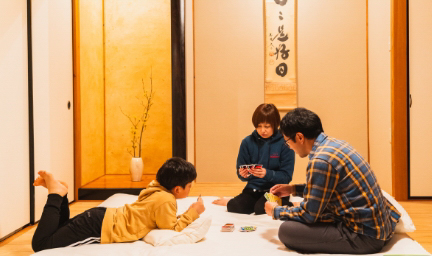
You can also put a futon on the tatami mats and have a good time with your family and friends.
The charm of the earth delivered by the plasterer with passion
The earth room is filled with the pride and technology of Susumu Harada, a plasterer from Hita. Harada uses an old-fashioned construction method without using modern building materials or machinery. By combining earth from various places, straw, seaweed paste (Nori), plaster, river sand, colored powder, etc., they create limitless hand finishing patterns.
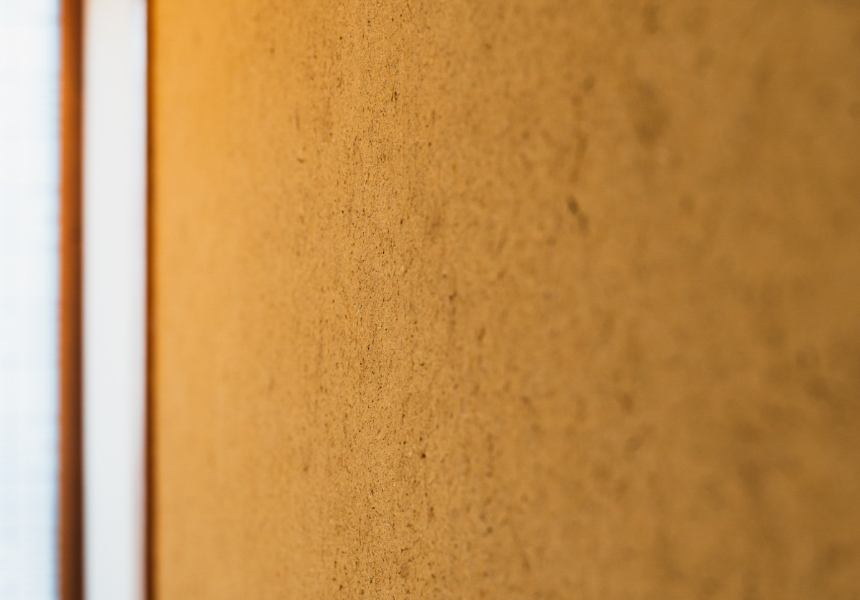
-
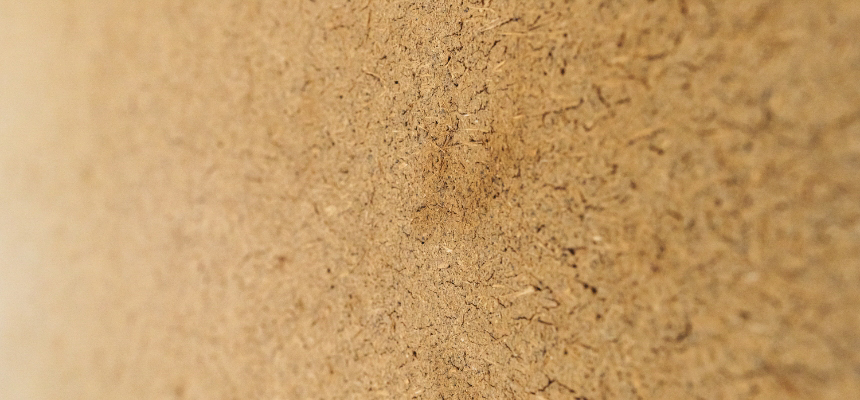
The walls are made from Hita river soil, straw, and sand. They have been coated to keep the roughness of the materials. Both the wall and the ceiling are the work of Mr. Harada, a world-renowned plasterer from Hita.
-
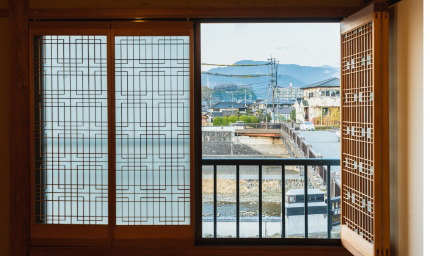
There is the Kagetsu River in front of you, you can hear the sound of water constantly, and you can see the morning sun and the setting sun slowly from the Miyuki Bridge and the promenade along the river.
-
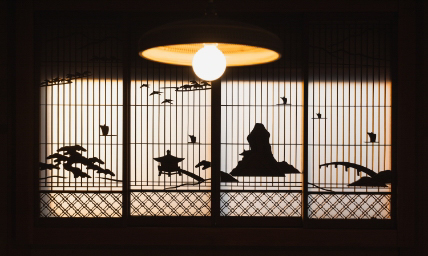
Shoin joinery windows are now very rare. It is the craftsmanship that existed in the past that creates this beauty. When exposed to light, you can enjoy shadows more deeply.
 Feel the warmth of Hita cedar and Onta ceramics
Feel the warmth of Hita cedar and Onta ceramics
-
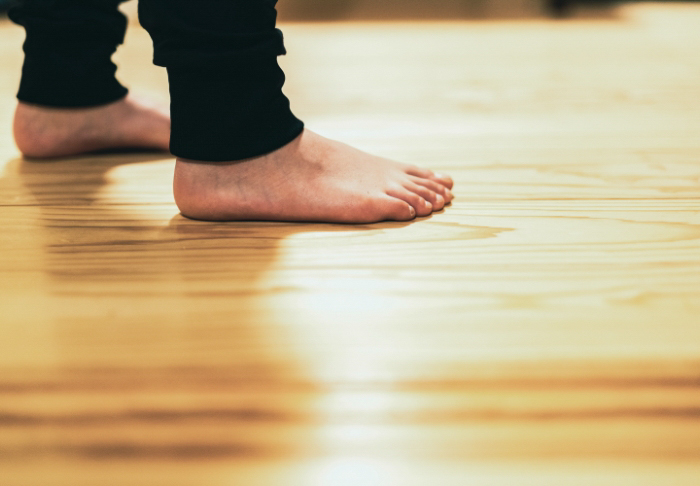
Feel the warmth
of the wood
under your feetThe lodge’s floor is made from Hita cedar wood, called Hitasugi. There are many varieties of this cedar, among them is the one called Ayasugi, which was used here for the floor because it grows very straight. To give the floor this special look, a special treatment called Udzukuri (羽造り) is applied by the Takamura sawmill.
-
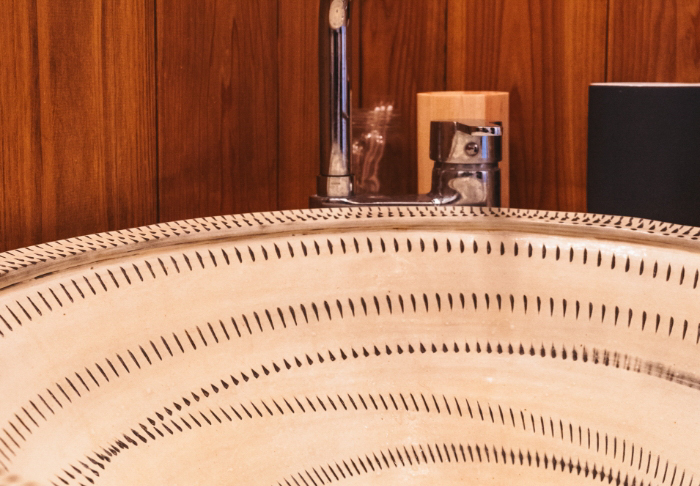

Enjoy the warmth of
pottery made of
water, earth, and fireThe potteries of Onta are famous all over the country.
o were specially made by the owner’s classmate, currently a potter in Onta, Mr. Kuroki Fumito. He specially made all the custom-made pottery in the house. -
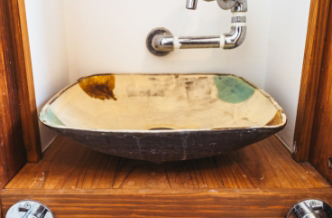


In the dining kitchen on the first floor, there are Suikomareso Blue’s special Ontayaki cups. Enjoy drip pack coffee.
 How to spend the time in Suikomareso
How to spend the time in Suikomareso
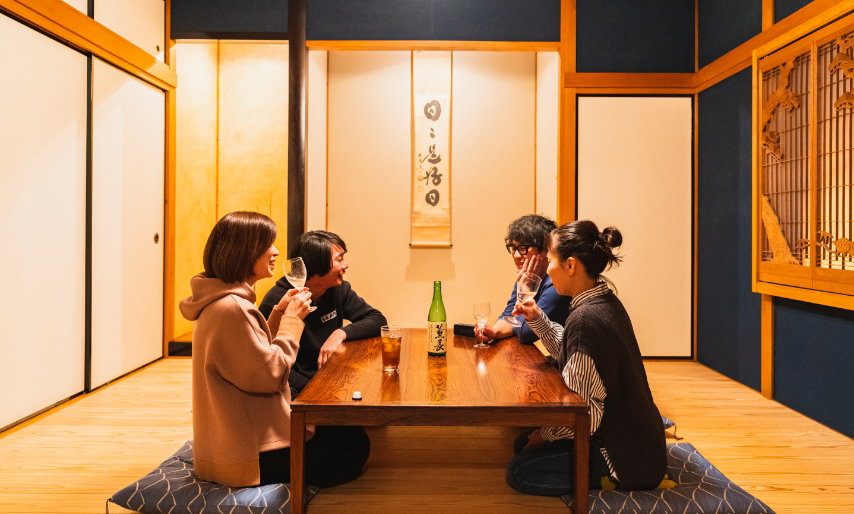
To stop, and spend the night there
Spend a moment of relaxation while feeling the activities of the city in a house full of materials and craftsmanship from Hita
The main of the house is to “stay as if to live”. We have services and facilities so that you can live the same way as usual. We wish that customers from everywhere could stay in Suikomareso as if they live there, and travel around Kyushu, Hita or even the whole Japan while enjoying the everyday life in Mameda, as one of its members.
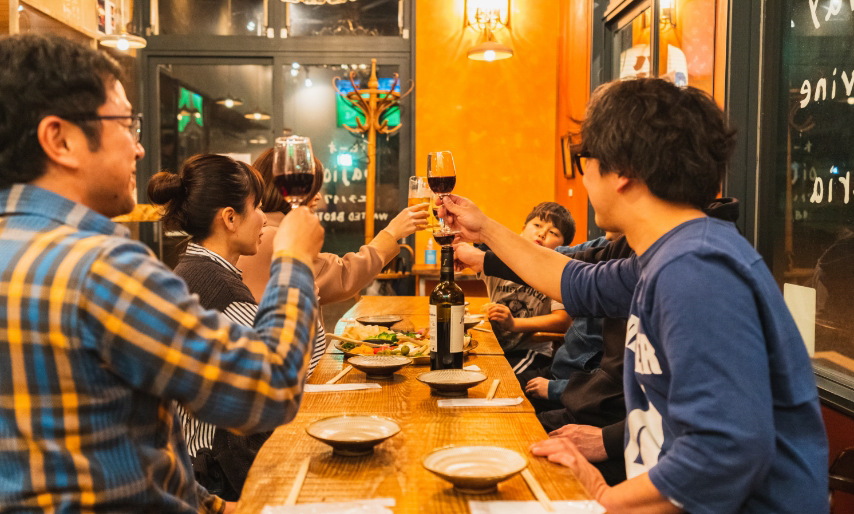
Interact
Interact with fellow travelers and locals from Hita at the “Bajio” cafe and bar adjoining the house
Café & bar “Bajio” is a place to relax for coffee and liquor, where you can enjoy local ingredients and exchange information. Feel the concepts of a Europe of yesteryear, taste the sake with the locals and enjoy Hita for a moment.
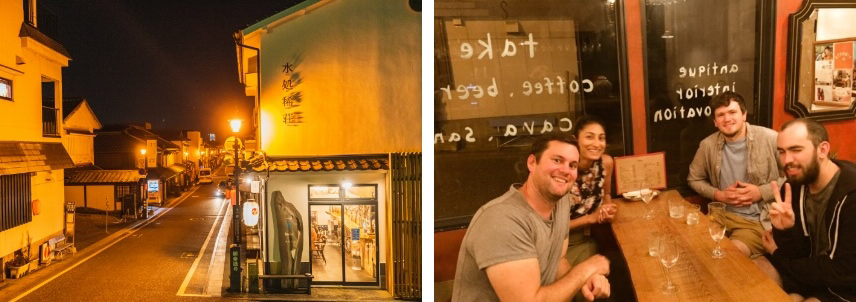
Discover
Watch recommended movies and live music, interact, and visit the historic town of Mameda and places where nature thrives
The small Hita Cinémathèque “Liberté” cinema room also hosts live musical performances and live paintings by known and unknown artists, whose works adapt perfectly to the atmosphere of the cinema. In the space that serves mainly as the cinema waiting room, there is a café area, like a living room where you can find workshops and live performances, and even enjoy various exchanges depending on the events. Plus, experience Hita leisurely as you visit the historic town of Mameda and places where nature is rich, such as the Mikuma River.
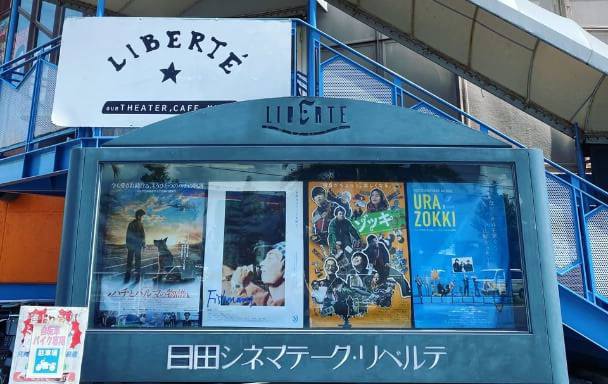
Hita Cinémathèque “Liberté”
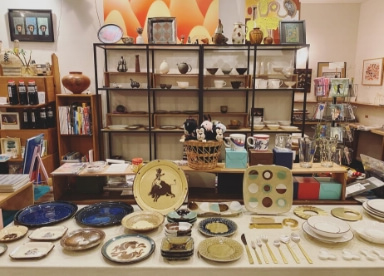
Liberte Cafe & Shop
 Staff
Staff
-

OWNER 瀬戶口 剛 Go Setoguchi
Take the time to appreciate Hita slowly
-

DIRECTOR 原 茂樹 Shigeki Hara
Do what’s in my power for my hometown
 Place where Suikomareso is located
Place where Suikomareso is located
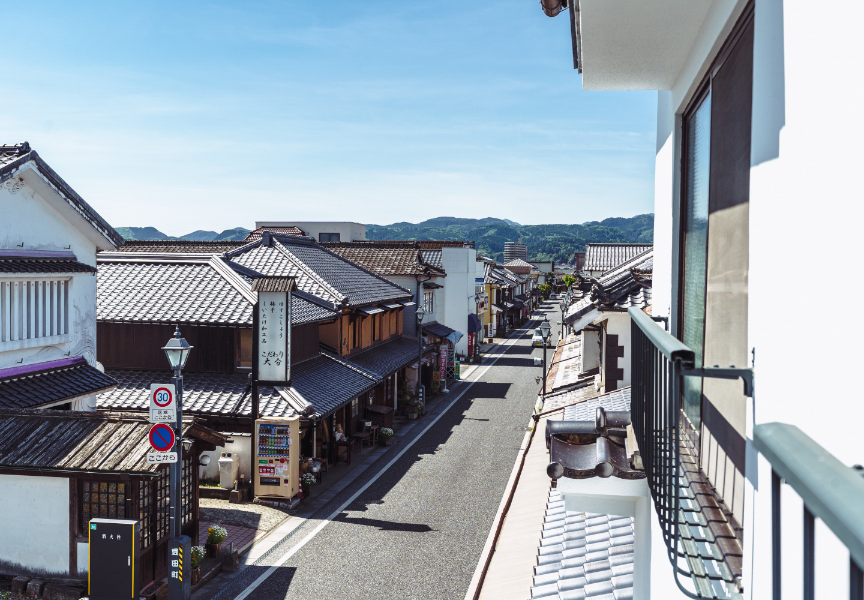
Historic cityscape of Mameda
This Mamedamachi is a nationally designated traditional buildings preservation district with many buildings that retain the townscape from the Edo period, but it still is a town where locals live and run shops while living here.
There are many buildings with shops on the first floor and residences on the second floor just like Suikomareso.
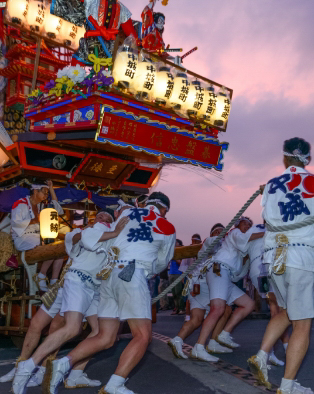
Hita Gion Matsuri, a traditional summer event in Hita that boasts a tradition of around 300 years.
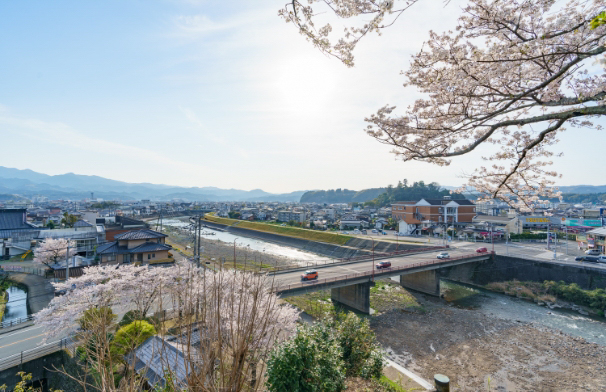
The Kagetsu river in spring, under the cherry blossoms, from the Jigenzan temple.

Hita Gion Matsuri, a traditional summer event in Hita that boasts a tradition of around 300 years.
Hita, a base for traveling around Kyushu
The Hita Basin is in the middle of northern Kyushu and is blessed with nature and water between Mt. Aso and Mt. Hiko.
Since the land pattern is such that the waterways and land routes that connect to various areas of Kyushu overlap, the history of the base where information and logistics are exchanged is deep from ancient times.
Very famous and old treasures of ancient times were found nearby. It is a land that continues to play an important role in Kyushu in each subsequent era and has a connection with the central government of the era.
Since the Toyotomi era (circa 1582-1598) it has been under the direct control of the central government, and during the Edo period it became a place controlled by the shogun (that is called Tenryo = 天領) and was the center of politics, culture, and economy in Kyushu.
There was a daikanjo (Edo-period prefectural governor’s place) and a jinya (military camp) on the other side of the river in front of Suikomareso, and Mamedamachi was under their protection, and it was allowed to run a financial business for the daimyo (prefectural governor) of Kyushu.
Thanks to that, the townspeople’s culture, such as the activities of the wealthy merchants of the shogunate, the money changers, and the traffic of literary and ink customers became rich, and the town gained prosperity.
It is a very interesting place with gold mine filled mountains, lake-like rivers and mysterious fog appearing on the sides of the mountains.
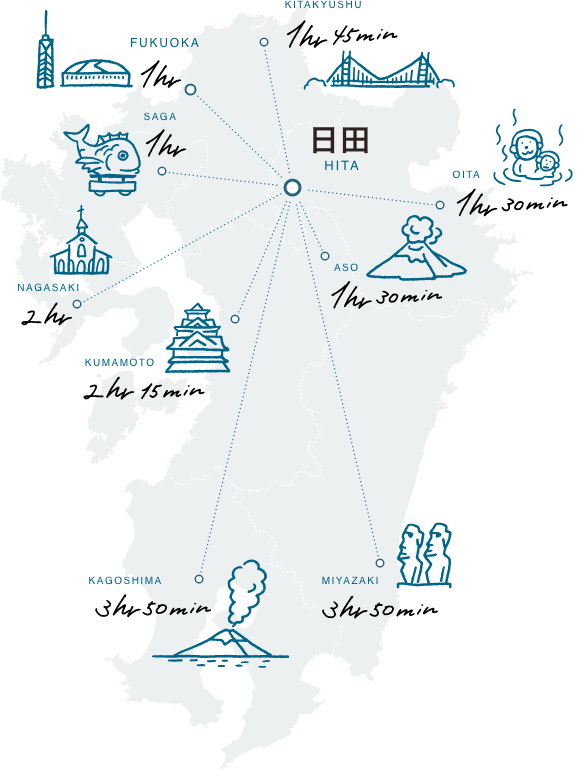
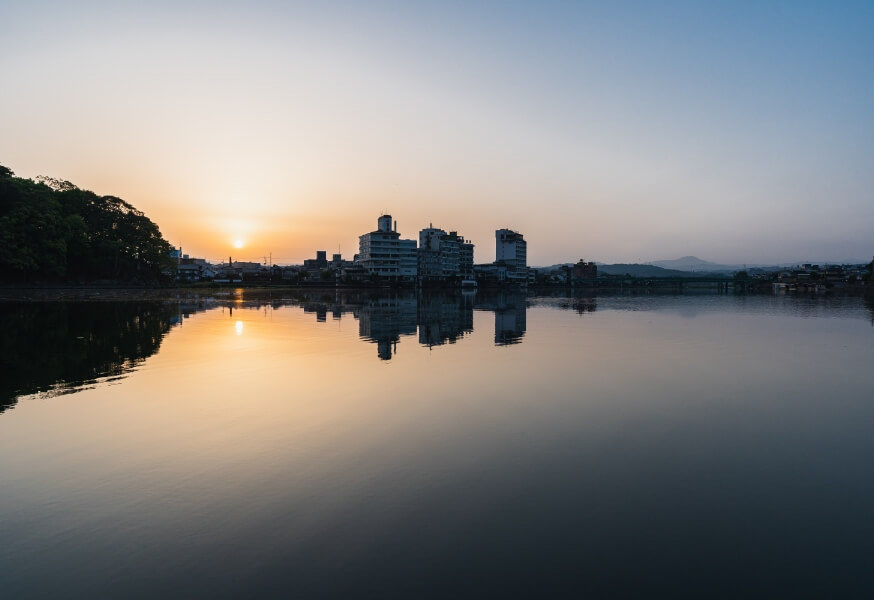
The vast Mikuma River. You can also enjoy the famous cormorant and ayu fish fishing and fun boats.
Address: 147 Mamedamachi, Hita Town, Oita Prefecture, 877-0005
[20 minutes’ walk from Hita station, 50 minutes’ drive from Fukuoka airport]
Check-in 16:00〜 / Check-out 〜11:00

